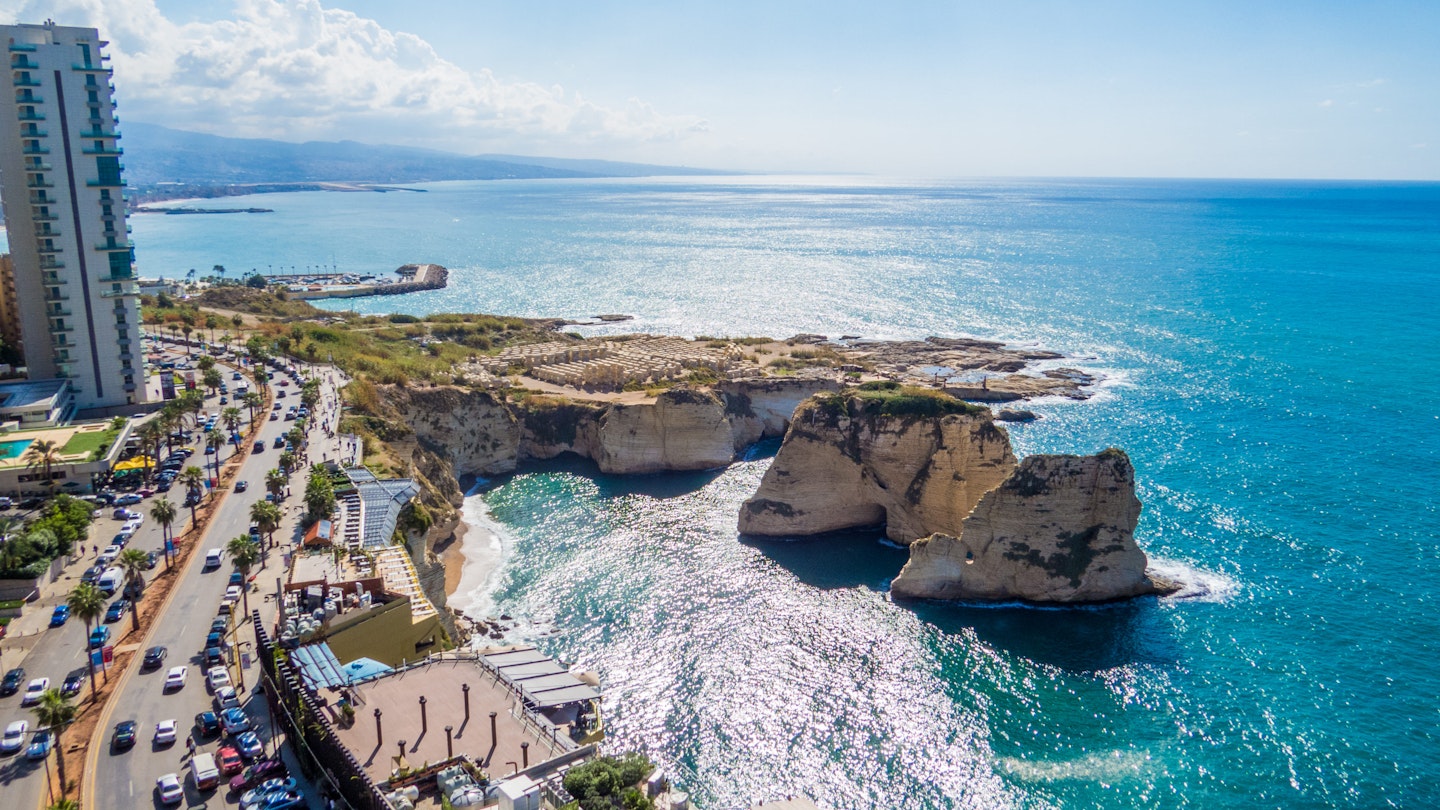My first visit to Beirut was something of an unplanned detour. Twenty years ago in Damascus, I took an impromptu shared taxi between the two capitals, armed with little more than a flyer for a cheap hotel in the Hamra district that a fellow backpacker had given me.
That trip marked the beginning of an immediate and long-lasting love affair. I joined the promenading crowds on the Corniche that runs alongside the Mediterranean and browsed for books in the beautiful campus of the American University of Beirut. Best of all was the food – thick creamy bowls of hummus topped with pine nuts, greasy shawarma kebabs, and green, parsley-capped mountains of tabbouleh that seemed to cost pennies.
Still, I could never have imagined that I would move to Beirut two decades later, or – by improbable coincidence – that I would do so with a partner who had been living in the city during my first visit, working as a reporter on the city’s only English-language newspaper. Our home is a five-minute walk from her old apartment in Gemmayzeh, and when she walked back into her old local restaurant after a break of 18 years, the manager still remembered her favorite dish. Beirut is like that.

As a guidebook writer for GoTravelDaily, my responsibility is to capture the essence of a destination alongside its sights. I could wax lyrical about the beautiful coastal view over Pigeon Rocks at Raouche, ideally while enjoying a mezze and a chilled glass of local wine at Al Falamanki restaurant. Furthermore, I can enthuse about the extraordinary collection of 20th-century Lebanese art at the jewel-box-like Sursock Museum, or the incredible restaurants tucked away in Monot, Clemenceau, or Badaro.
However, as the city grapples with the aftermath of the August 4 explosions, I would like to take you on a tour of one of the oldest cities in the world and explain my love affair with Beirut, as well as why this ancient, diverse, and eternally charming metropolis will surely rebuild.
In this personal guide, I would emphasize the antique shops and junk stores of the Basta district. This unremarkable corner of the city, nestled between a busy raised highway and a cemetery, is perfect for treasure hunters. The best shop owners offer you tiny cups of bitter coffee while you browse, then present you with tinplate advertising placards for long-defunct brands of beer, colored lithographs from 19th-century Parisian newspapers, and vivid posters for old Omar Sharif movies.
For refreshments, we would indulge in homemade ice cream at Hana Mitri, a tiny shop in an old stone building that has been a family business for decades, claiming to have closed only for one day during the 15 years of civil war. While in line – there is always a queue – one might notice the bullet holes on the outside walls, acknowledge their dedication to perfecting the aromatic rose water ice, and then savor the most eye-watering lemon sorbet.

Next, we would explore Mar Mikhael, a neighborhood where many signs are still written in Armenian. There is a picture framer here where you can browse what others are displaying on their walls, and it might take a moment to understand why the owners welcome you with smudged gray on their foreheads until you realize they have just returned from an Ash Wednesday service.
Perhaps later, we would venture to downtown Beirut. We could visit The Egg, a derelict cinema on the outskirts that narrowly missed the opportunity for rejuvenation. Named for its concrete Brutalist shape, it symbolizes the lost optimism of the early 1970s. However, in October 2019, it became part of the thawra (revolution) street protests against government corruption. Now utilized for activism teach-ins, it stands adorned with vibrant graffiti, reflecting the brilliant potential of Lebanon’s youth.
Indeed, Beirut possesses some of the region’s most vibrant street artists. If time allowed, I’d guide you on a walking tour to unveil the stories behind some of the best. We would seek pieces by Yazan Halwani, whose giant portraits of Lebanese icons are surrounded by delicate clouds of Arabic calligraphy. My personal favorite, however, is the enormous mural of an astronaut planting the Lebanese flag on the moon while enjoying a slice of manakeesh (a baked flatbread with olive oil and a spice mixture known as za’atar) – a playful nod to the urban myth suggesting Neil Armstrong may have been secretly Lebanese himself.

Finally, as we gaze across Martyr’s Square, with its twin monuments commemorating both Lebanese independence from the Ottomans and the thawra movement a century later, I would share the joyous imagery of a sea of flags that flooded the city last October, along with the streams of families walking below our balcony to participate in the great unifying Lebanese spirit. I would highlight the sites of community kitchens, DJ sound systems, and the stand where children could have their faces painted with the Lebanese flag. Additionally, I would reflect on the remarkable coming together of all of Lebanon’s diverse communities – a strong sense of national identity that is the foundation upon which Beirut’s recovery will be built.





